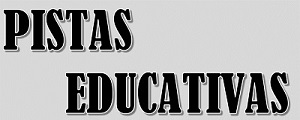ESTUDIO DE LAS PROPIEDADES DE DESGASTE DE UN TRIBOSISTEMA DE ACERO INOXIDABLE PARA APLICACIONES EN AMBIENTES MARINOS (STUDY OF THE WEAR PROPERTIES OF A STAINLESS STEEL TRIBOSYSTEM FOR MARINE ENVIRONMENT APPLICATIONS)
Resumen
El océano es el principal ecosistema que sostiene y regula el clima en el planeta, genera el 50% del oxígeno de la Tierra y absorbe aproximadamente el 90% del calor generado por emisiones. Permitir que la huella de carbono acabe con este medio ambiente significa renunciar a productos clave para la vida diaria como alimentos, medicinas y biocombustibles, sólo por mencionar algunas de las afectaciones que se tendrían. Para hacer eficiente el uso de los recursos naturales, es imprescindible aplicar los conocimientos de ciencias como la tribología para disminuir la energía que se pierde en un sistema. En el presente trabajo se muestra el análisis de desgaste realizado en un tribosistema de acero inoxidable AISI 316 y AISI 420 para que pueda considerarse como opción en aplicaciones marinas. La caracterización consistió en pruebas de desgaste bajo el método perno-en-disco con cuatro cargas diferentes, el análisis del mecanismo y tasa de desgaste, así como el volumen perdido. Los resultados muestran que el sistema de acero inoxidable puede ser una opción viable para utilizarse en aplicaciones que tengan un rango de carga similar a los ensayados para evitar daños severos en el material.
Palabras Clave: acero inoxidable, ambiente marino, desgaste.
Abstract
The ocean is the main ecosystem that sustains and regulates the climate on the planet, it generates 50% of the Earth's oxygen and absorbs approximately 90% of the heat through emissions. Allowing the carbon footprint to destroy this environment means giving up key products for daily life such as food, medicines, and biofuels, to mention some possible effects. Applying knowledge of sciences such as tribology is essential to efficiently use natural resources to reduce the energy lost in a system. This work shows the wear analysis carried out on a tribosystem of AISI 316 and AISI 420 stainless steel so that it can be considered an option in marine applications. The characterization consisted of wear tests under the pin-on-disk method with four different loads, and the analysis of the mechanism and rate of wear, such as the volume loss. The results show that the stainless steel system can be a viable option to use in applications with loads in ranges as shown to avoid severe damage to the material.
Keywords: marine environments, stainless steel, wear.
Texto completo:
991-1008 PDFReferencias
O. d. l. N. Unidas, «Objetivos de Desarrollo Sostenible,» 25 Septiembre 2015. [En línea]. Available: https://www.un.org/sustainabledevelopment/es/2015/09/la-asamblea-general-adopta-la-agenda-2030-para-el-desarrollo-sostenible/#.
M. Woydt,«The importance of tribology for reducing CO2 emissions and for sustainability,» Wear, Vols. %1 de %2474 - 475, 2021.
O. d. l. N. Unidas, «Objetivo 14: Conservar y utilizar sosteniblemente los océanos, los mares y los recursos marinos,» Organización de las Naciones Unidas, [En línea]. Available: https://www.un.org/sustainabledevelopment/es/oceans/. [Último acceso: 8 Agosto 2024].
A. López-Ortega, R. Bayón y J.L. Arana, «Evaluation of protective coatings for offshore applications. Corrosion and tribocorrosion behavior in synthetic seawater,» Surface and Coatings Technology, vol. 349, pp. 1083 - 1097, 2018.
Outokumpu, Handbook of Stainless Steel, Helsinki, Finland: OutokumpuOyj, 2017.
Sandeep Singh y Utpal Borah, «Some Results of Pin on Disc Tribological Evaluation of 316LN Stainless Steel,» Aspects of Mechanical Engineering and Technology for Industry, vol. 2, 2014
Rongguang Wang, Yuto Ohgata, Yunhui Li, Tian Xiao y Masaharu Honda, «Tribocorrosion Behaviour of SUS430 Stainless Steel in Aqueous Solutions with Different pH,» Coatings, vol. 13, 2023.
A. International, ASTM G40 - Standard Terminology Relating to Wear and Erosion, West Conshohocken: ASTM International, 2002.
A. International, ASTM G99-17 - Standard Test Method for Wear Testing with a Pin-on-disk Apparatus, West Conshohocken: ASTM International, 2020.
A. International, ASTM G133-02 - Standard Test Method for Linearly Reciprocating Ball-on-Flat Sliding Wear, West Conshohocken: ASTM International, 2002.
Kenneth G. Budinski y Steven T. Budinski, «Interpretation of galling tests,» Wear, Vols. %1 de %2332 - 333, pp. 1185 - 1192, 2015.
Arun Prasad Murali, Mathew Alphonse, Dharmalingam Ganesan, Sachin Salunkhe y Hussein Mohammed Abdel Moneam Hussein, «Sliding wear behaviour of salt bath nitrided 316LN austenitic
stainless steel,» Applied Surface Science Advances , vol. 15, 2023.
Luis D. Aguilera-Camacho, María T. Hernández-Sierra, J. Santos García-Miranda y Karla J. Moreno, «On the Influence of Tribological Properties of AISI 4140 Annealed Steel against Ceramic Counterparts under Dry and Lubricated Conditions and Their Effect on Steel Microstructure,» Metals, vol. 11, 2021.
Ajit Bastola, Ruby McCarron, Philip Shipway, David Stewart y Daniele Dini, «Experimental and numerical investigations of sliding wear behaviour of an Fe-based alloy for PWR wear resistance applications,» Wear, Vols. %1 de %2540 - 541, 2024.
Ashish Yadav, Manu Srivastava, Prashant K. Jain y Sandeep Rathee, «Microstructure transformations and improving wear resistance of austenitic stainless steel additively fabricated by arc-based DED process,»Defence Technology, 2024
Kittichat Wiratkapun, ChanunSuwanpreecha, SiwatLinjee, Sukrit Songkuea, TuksadonWutikhun, VisittapongYordsri y Anchalee Manonukul, «Surface modification and enhanced wear performance through severe shot peening treatment in 316L stainless steel manufactured by metal injection moulding,» Journal of Materials Research and Technology, vol. 29, pp. 4072 - 4085, 2024.
Sabri Alkan y Mustafa Sabri Gök, «Effect of sliding wear and electrochemical potential on tribocorrosionbehaviour of AISI 316 stainless steel in seawater,» Engineering Science and Technology, an International Journal, vol. 24, pp. 524 - 532, 2021.
URL de la licencia: https://creativecommons.org/licenses/by/3.0/deed.es

 Pistas Educativas está bajo la Licencia Creative Commons Atribución 3.0 No portada.
Pistas Educativas está bajo la Licencia Creative Commons Atribución 3.0 No portada. 
TECNOLÓGICO NACIONAL DE MÉXICO / INSTITUTO TECNOLÓGICO DE CELAYA
Antonio García Cubas Pte #600 esq. Av. Tecnológico, Celaya, Gto. México
Tel. 461 61 17575 Ext 5450 y 5146
pistaseducativas@itcelaya.edu.mx
